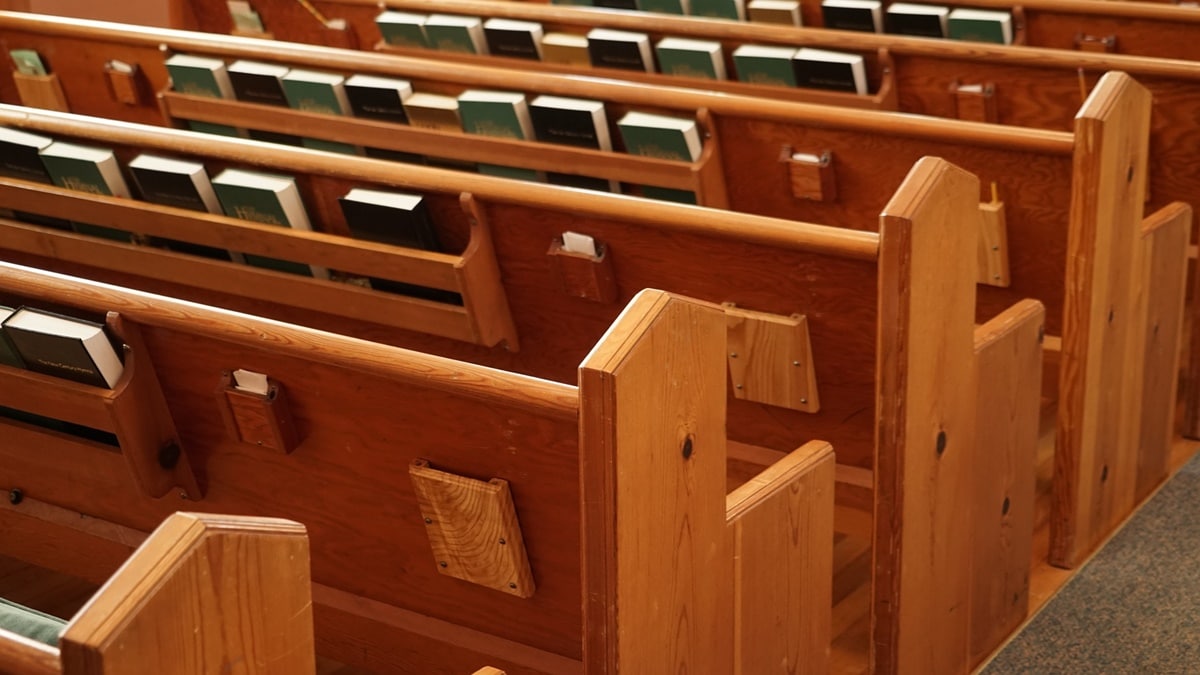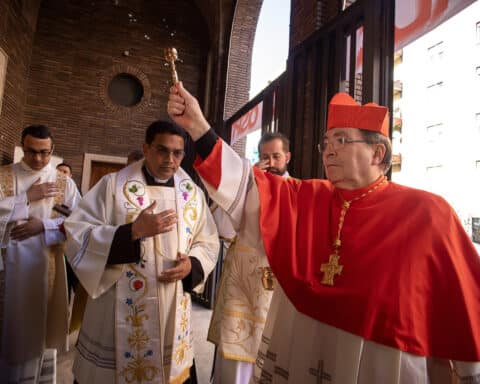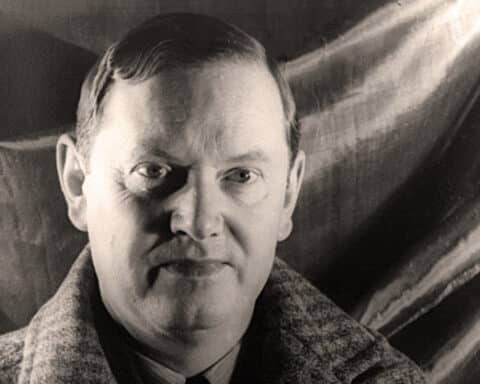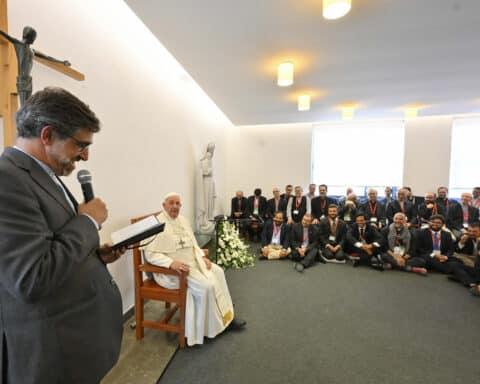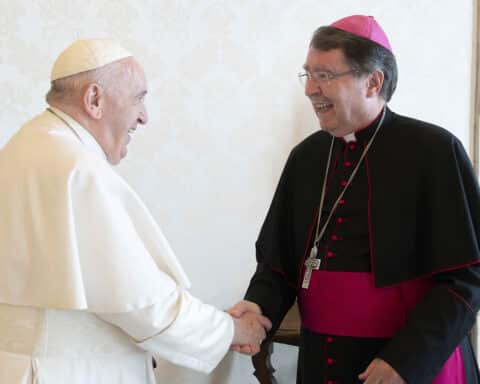Christians could soon be a minority in the United States if present demographic trends continue in the coming decades.
In the last 10 years, the percentage of the country’s Christian population fell by 12 percentage points — from 77 to 65% — a staggering decline fueled by generational change, a secularizing culture and disillusionment with religion in general.
“This is all worrisome for organized religion. They have to find a way to evangelize the younger generations,” said Mark Gray, a senior research associate and director of CARA Catholic Polls at the Center for Applied Research in the Apostolate at Georgetown University.
Gray was referring to an Oct. 17 Pew Research Center report that revealed a dramatic overall decline in American religious observance. The report is consistent with findings from other sources such as the General Social Survey.
Pew’s report, an aggregation of annual surveys that ask about religion, not only found that fewer Americans identify as Christians, but that the percentage of people who don’t identify with any religion — the so-called “nones” — grew from 17% in 2009 to about 26% today.
The “nones,” who are predominantly young adults, now outnumber self-identified Catholics, who comprise 20% of the population, down from 23% a decade ago.
A shrinking population
And it’s not just that Christians are becoming a smaller share of the U.S. adult population; they also appear to be declining in absolute numbers.
“This is a very complex issue, with a lot of factors. There is no single law of causation here,” William Dinges, a religious studies professor at The Catholic University of America, told Our Sunday Visitor.
The secularizing drift cuts across socioeconomic lines, including race and ethnicity. In one of the Pew report’s more sobering findings, fewer than half (47%) of Hispanics in the United States today say they are Catholic. Ten years ago, that figure was 57%.
“The decline in affiliation among Hispanics mirrors what we have seen among other Catholic immigrants groups,” said Gray, who compared the religious disaffiliation among Latinos with how successive generations of Irish and Italian-Americans became less religious than their immigrant ancestors.
“Any group coming from a mostly Catholic country to the religious pluralism of the United States often chooses to switch faiths or not pick up the faith of their home or ancestors’ home country,” Gray said.
Maria del Mar Muñoz-Visoso, the executive director of the Secretariat of Cultural Diversity in the Church for the U.S. Conference of Catholic Bishops, said that Hispanics, especially the younger generations that have grown up in the United States, are not exempt from the same cultural forces that are pulling other groups away from the Church.
“The Church cannot take Latinos for granted,” Muñoz-Visoso said. “If we don’t do something, and do it quickly and do it well, that trend will continue to the detriment of the Church.”
Some factors that account for the decline in religious practice — secularization, a materialistic popular culture, anger over religious leaders’ hypocrisy and scandal — present serious challenges for the Church in the United States to evangelize and form Catholics in the faith.
“All these things seem to be affecting the Faith at the same time that we are seeing attacks on the family, including confusion on the identity of the human person, on what a man is and what a woman is,” said Cristofer Pereyra, the director of the Hispanic Missions Office for the Diocese of Phoenix.
Pereyra told OSV the various cultural challenges facing the Church should “be more reason” for faithful lay Catholics to “step up” and lead.
“We have neglected our responsibility to lead in the Church for the longest time,” Pereyra said. “We act like consumers receiving a product, as if we buy [the sacraments] from the clergy. That is not really taking part in the force that drives the Church.”
That sense of lay ownership, however, is made difficult by various surveys over the years that have found that only about 20% of Catholics attend weekly Mass. And even that continues to decline. The Pew survey found that for the first time, more Americans attend religious services a few times a year or less (54%) than those who go to services at least once a month (45%).
“Disaffiliation cuts across all age cohorts. … This is not something confined solely to younger people, millennials, Gen Z’ers, though it’s more prominent in those cohorts,” said Dinges, who teaches a graduate level course on the “nones” and is completing a book on disaffiliation among American Catholics.
Disaffiliation cuts across denominational lines. Protestants now make up less than half of the United States’ population at 43%, down from 51% a decade ago. White evangelicals are also on the decline, falling from 19% of the population in 2009 to 16% today.
Those declines underscore a harsh reality: The Christian population in the United States is shrinking.
Looking toward the future
“Generational replacement is happening as older religious people pass away and younger less religious people are becoming adults,” Gray said.
Taking into account the country’s population growth over the last 10 years and how respondents described their religious affiliation, the Pew survey estimates that the Christian adult population today is between 164 million and 169 million. In 2009, the survey estimated that population to be between 176 million and 181 million.
That downward trend has future social, cultural and political ramifications. The religiously unaffiliated are growing faster among Democrats, but their numbers are also increasing in the Republican Party.
“As the nones continue to grow, they could appeal to the Republican Party, which would then be a different Republican Party than the one that tried to appeal to conservative Catholics and evangelical Protestants over the last three or four decades,” Geoffrey Layman, a political science professor at the University of Notre Dame, told Our Sunday Visitor.
The Pew religion survey also indicates a generational divide, with the decline in affiliation largely concentrated among millennials.
For example, about 84% of the Silent Generation — people who were born between 1928 and 1945 — identify as Christian. Among baby boomers, that figure is 76%. However, only 49% of the millennial generation — born between 1981 and 1996 — say they are Christian.
There are as many millennials who say they “never” attend religious services (22%) as there are those who say they go at least once a week.
“They are more likely to spend a lot of time in digital spaces and to define their own personal religious beliefs or sense of spirituality,” said Gray, who added that younger Americans in general are less likely to be members of traditional groups, including churches.
Indeed, though they may not identify with a particular religious tradition, the “nones” are not a unified bloc of atheists or secular-humanists. Many of them would describe themselves as “spiritual but not religious,” which means there is at least a potential opening there for evangelization.
Said Dinges, “Don’t assume that just because somebody doesn’t go to church means that they aren’t spiritual or don’t have some sense of something bigger than themselves.”
Brian Fraga is a contributing editor for Our Sunday Visitor.

